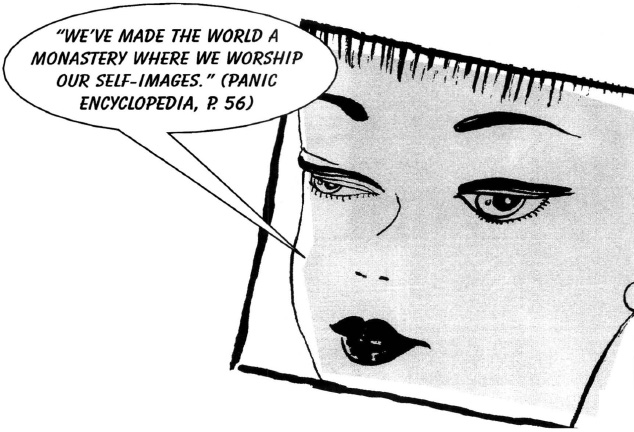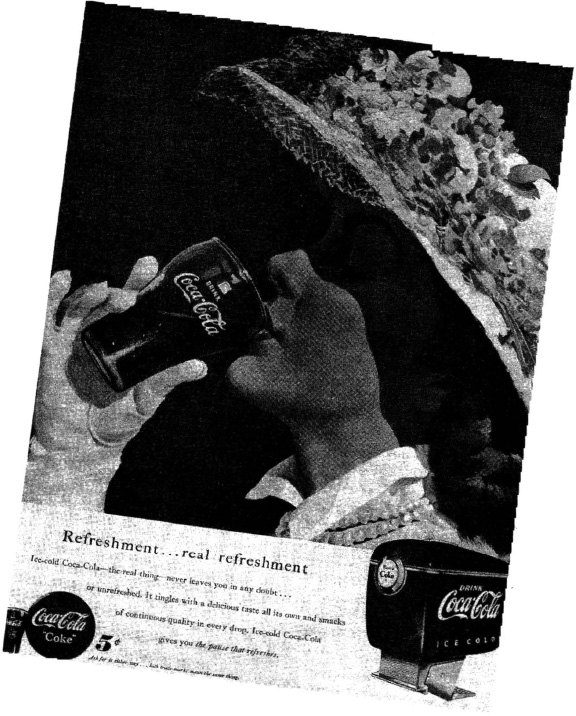 he human figures in Bosch paintings react to the chaos and upheaval around them with horror and panic. The same thing is happening today. Panic of a different sort, according to Arthur Kraker, who describes himself as “the Canadian virus” (Panic Encyclopedia, p. 265) and “a Canadian successor to McLuhan in many ways, but as a McLuhan for the 1990’s.” (Mondo 2000, #11, 1993, p. 66) In our electronic age, panic is paradoxically both frenzy and inertia. Kraker and his collaborators find the evidence of this ambiguity everywhere from art and advertising to sex and somnambulism, offering updates on the lesson McLuhan taught through the myth of Narcissus.
he human figures in Bosch paintings react to the chaos and upheaval around them with horror and panic. The same thing is happening today. Panic of a different sort, according to Arthur Kraker, who describes himself as “the Canadian virus” (Panic Encyclopedia, p. 265) and “a Canadian successor to McLuhan in many ways, but as a McLuhan for the 1990’s.” (Mondo 2000, #11, 1993, p. 66) In our electronic age, panic is paradoxically both frenzy and inertia. Kraker and his collaborators find the evidence of this ambiguity everywhere from art and advertising to sex and somnambulism, offering updates on the lesson McLuhan taught through the myth of Narcissus.

Here frenzy exerts a pull against the inertia and impotence engendered by nostalgia. In other cases, panic is inertia alone, the cancelled identities of figures in the paintings of Alex Colville, Eric Fischl, André Masson, the annihilated image of self that McLuhan and Nevitt refer to, Narcissus moving into the twenty-first century with nineteenth century perceptions. Here it is not a matter of failing to recognize his own image; he is stripped of self-image by yet another new environment.
Panic ads. In The Mechanical Bride McLuhan observes that ads for Coca-Cola in the 1950s combine the images of mother and sweetheart, exuding wholesomeness and evoking soft emotions. The subtle religious overtones of this advertising turned absurd when the cover of Time (15 May 1950) portrayed the globe sucking a coke. Mom-gal and the coke sucker are long gone, but the soft emotions and soft, universal religion (“I’d like to give the world a Coke, Coke is life”) still dominate the advertising.
 s for wholesomeness, it has been replaced by a hole: “Just draw a picture and put yourself in it. Then make that picture into your transient heaven. Instant Eden. As many Edens as you please. And why even draw your own picture? The pictures are everywhere and each of them has a hole where you can fit.” (Panic Encyclopedia, p. 54) In the inversion of capitalism created by frenzied publicity, products are not only subordinate to the production of advertising but reduced to the status of fetish— take-out items from the drive-through church. Is Narcissus in the congregation? Yes, and having no problem with recognizing himself:
s for wholesomeness, it has been replaced by a hole: “Just draw a picture and put yourself in it. Then make that picture into your transient heaven. Instant Eden. As many Edens as you please. And why even draw your own picture? The pictures are everywhere and each of them has a hole where you can fit.” (Panic Encyclopedia, p. 54) In the inversion of capitalism created by frenzied publicity, products are not only subordinate to the production of advertising but reduced to the status of fetish— take-out items from the drive-through church. Is Narcissus in the congregation? Yes, and having no problem with recognizing himself:

But the panic of frenzy is no less a form of self-amputation than the panic of inertia.


